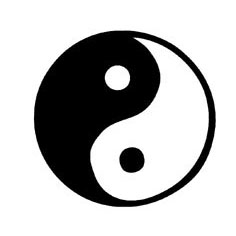The anima and animus are two terms use by psychologist Carl Jung to describe the feminine and masculine halves of the personality. He thought that all people had either a feminine (anima) or masculine (animus) side. The goal of the person, in reaching individuation and having a whole personality is to integrate the side opposite to their gender. Therefore men have an anima, feminine side, and women have an animus, masculine side.
Jung’s theories included the idea that the anima and animus primarily resided in the unconscious, but failure to recognize or incorporate them into the personality might mean a backlash from the unconscious. In other words, a man who refuses to recognize his anima may end up being anima-driven, and act with the worst aspects of the anima. Alternately, he may deliberately assert the negative aspects of his masculine self to attempt to control his anima from emerging.
The ability to emotionally relate to others, the creative force, and hence the artistic force are anima characteristics. A man who is creative, a great listener, and has successful relationships is likely in touch with his anima.
The ability to emotionally relate to others, the creative force, and hence the artistic force are anima characteristics. A man who is creative, a great listener, and has successful relationships is likely in touch with his anima.
When considering the anima and animus for women, accessing the masculine side, or animus, gives women the ability to use reason, think along logical terms, and assert physical strength and intellect, among many masculine traits. The idea of being brave, and being strong are more commonly thought of as masculine attributes. Jung would probably conclude that the modern day single mom really needs her animus in order to successfully parent her children, since she must be both mom and dad to her kids.
Jung, and later Joseph Campbell, also used the psychological terms anima and animus to discuss the hero’s journey in myth and literature. In the male hero’s journey, there is always confrontation with a very frightening female character or beast. This is meant to represent the anima ignored.
The anima must be appeased or conquered and strength must be taken from that side of the hero in order for the journey to be successful. Until the hero is able to recognize the parts of himself that are feminine, he cannot progress further and will be in constant conflict with the anima. The same is true of the heroine’s journey and integration of animus, although exploration of the heroine is less applied in Jung and Campbell’s work.
When the person or the fictional hero accepts anima and animus he or she is reaching wholeness or individuation. To Jung it was rejection of anima and animus that led many people to significant psychological problems. When anima and animus were recognized, used and appreciated, the person stepped forward toward psychological wellness.
(excerpted from wisegeek.com
(excerpted from wisegeek.com
This balance is something I've been paying attention to in my analysis. I hope it will give you some insight.

This is what made me think of Dar William's song, "When I Was A Boy".
ReplyDelete